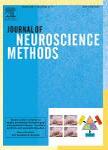版权所有:内蒙古大学图书馆 技术提供:维普资讯• 智图
内蒙古自治区呼和浩特市赛罕区大学西街235号 邮编: 010021

作者机构:CUNY Brooklyn Coll Dept Biol Brooklyn NY 11210 USA CUNY Grad Ctr Doctoral Subprogram Ecol Evolutionary Biol & Beha New York NY USA CUNY Grad Ctr Doctoral Subprogram Neurosci New York NY USA CUNY Grad Ctr Doctoral Subprogram Behav & Cognit Neurosci New York NY USA Brooklyn Coll AREAC Brooklyn NY USA
出 版 物:《JOURNAL OF NEUROSCIENCE METHODS》 (神经科学方法杂志)
年 卷 期:2019年第324卷第0期
页 面:108286-000页
核心收录:
学科分类:0710[理学-生物学] 1002[医学-临床医学] 1001[医学-基础医学(可授医学、理学学位)] 10[医学]
主 题:Neurohistology ImageJ Image analysis Macro programming Quantitative neuroanatomy Immunofluorescence microscopy
摘 要:Background: The development and increasing adoption of advanced microscopy imaging technologies, including high resolution, multi-dimensional digital photography and multiple fluorescence channel acquisition, as well as the availability of inexpensive terabyte-capacity storage, have enabled research laboratories to pursue neurohistological imaging experiments involving multiple neurochemical probes and experimental conditions covering a variety of brain regions. Analyzing and processing the resulting datasets, composed of hundreds of micrographs, presents challenges in ensuring accuracy and reproducibility under demanding time and training constraints. New method: The Custom Macros plugin suite for ImageJ automates and systematizes user interaction in neurohistological image analysis tasks, including region selection and thresholding, point/object counts, area measurement, batch filter processing, and data review. Written in the accessible ImageJ macro language, the plugin implements a user login-based data storage framework and facilitates inter-laboratory collaboration over cloud file server clients. Results: A macro-based interface approach integrates dozens of novel operations, software interactions, algorithm calls, and background tasks into individual shortcut commands. Every completed procedure generates image, region, and calibrated measurement records that are saved in a standardized folder structure. Comparisons with existing methods: Plugin installation adds startup access to a persistent interface layer of extensive and streamlined functionality that is generalizable to a variety of neurohistological contexts, thus providing an efficient and reliable alternative to the use of analysis software in an unstructured, provisional manner that necessitates repeated menu and plugin interaction. Conclusions: Our free/open-source software provides researchers a straightforward solution to addressing daunting usability and data oversight issues, ultimately making